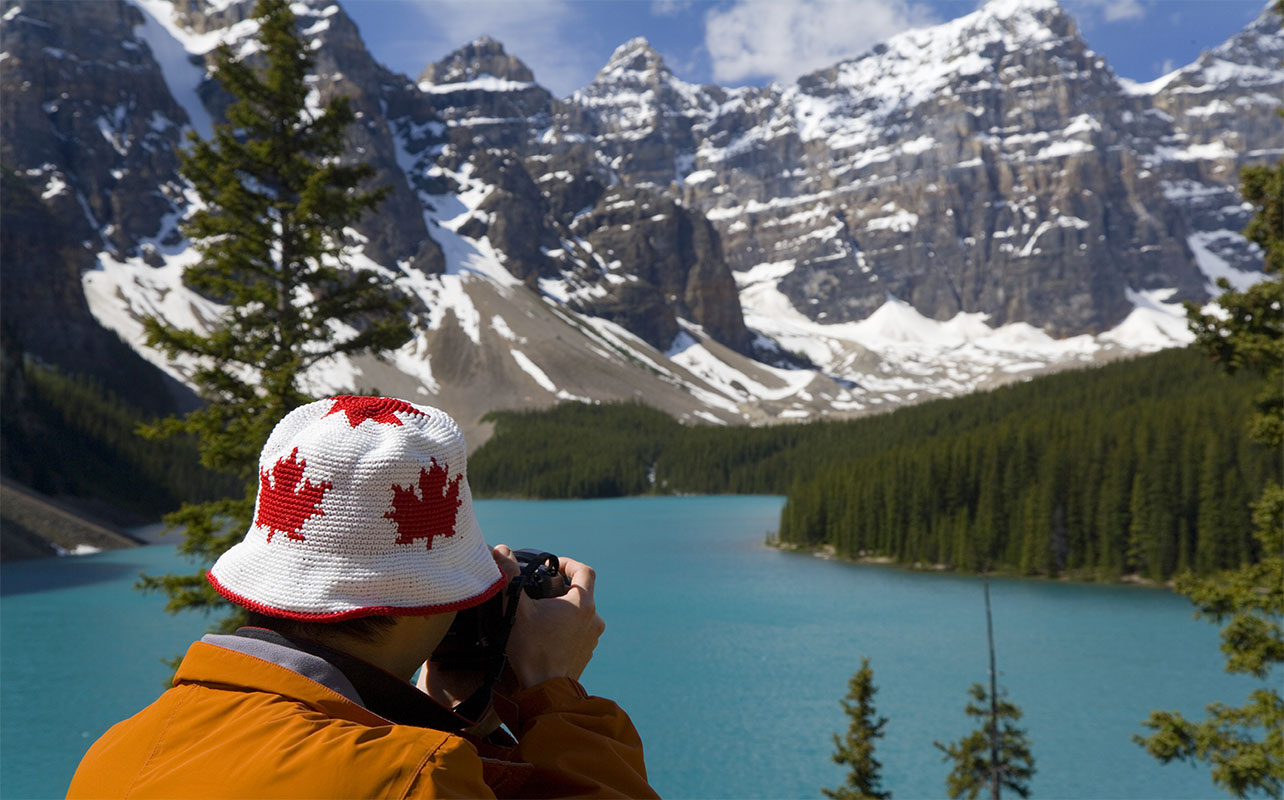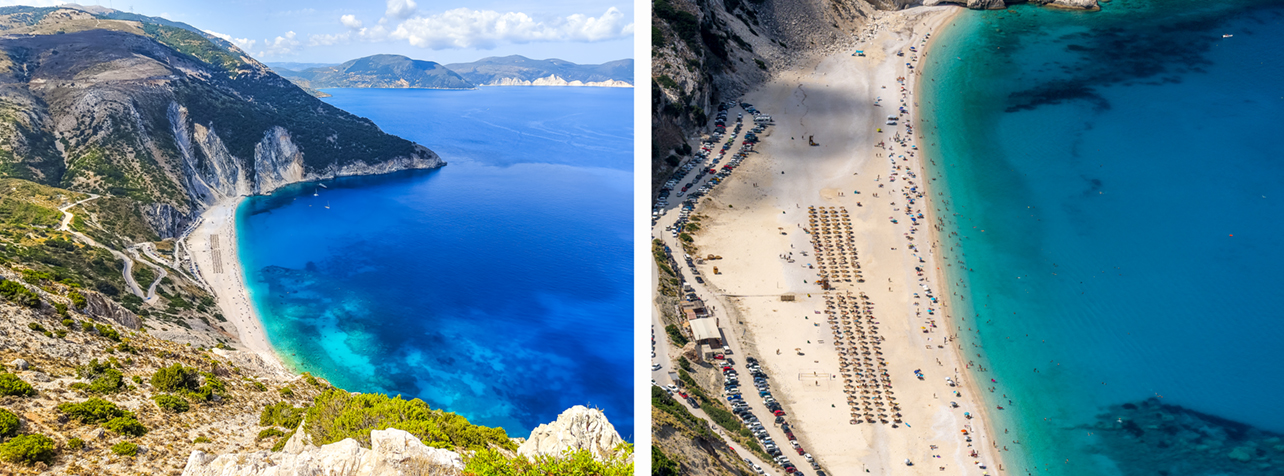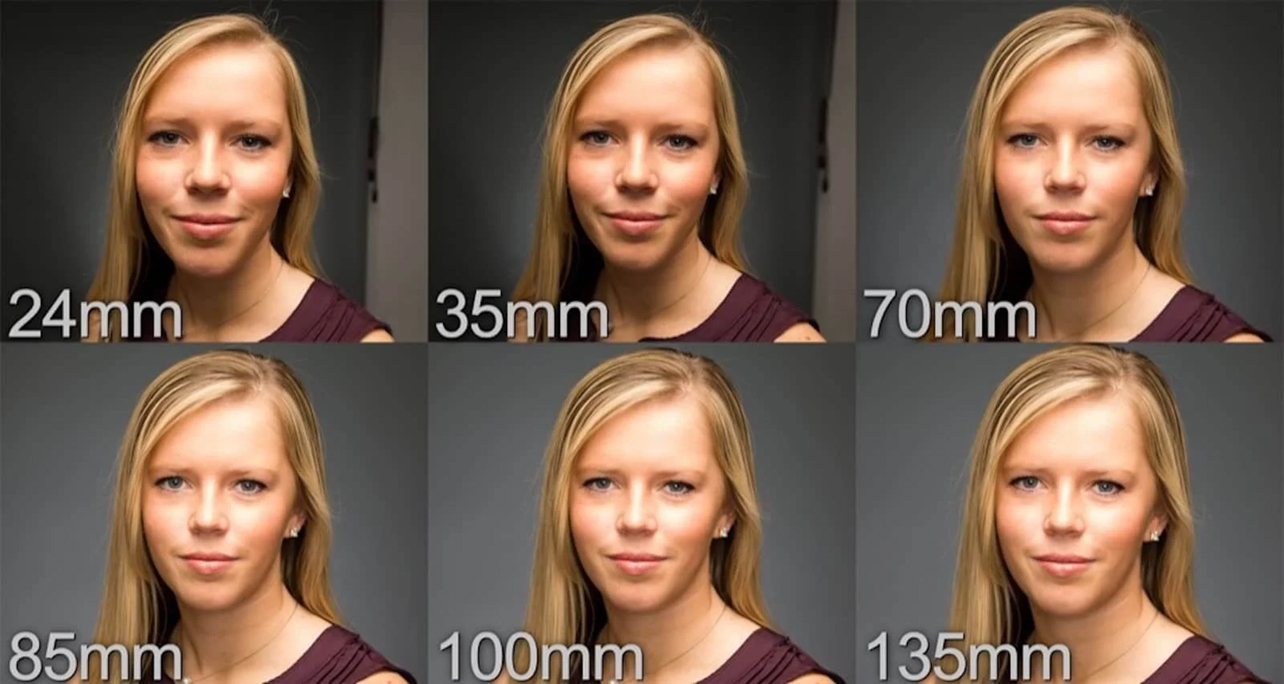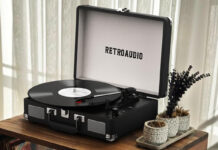
Struggling to choose the right lens for your photography? You don’t always have to stick with just one on any photo shoot but if you’re budgeting for whichever one you want to add to your gear, what you want to capture matters. Is it sweeping landscapes or getting as close as possible to wildlife? Are you considering doing more street photography or getting into portraits? There are key differences in the wide-angle lens vs telephoto lens debate that can impact how you capture a scene and achieve your creative vision.
In this guide, we’ll break down everything beginner to intermediate photographers need to know about wide-angle and telephoto lenses. From how they affect your image to which type is ideal for different shooting scenarios, we’ll help you confidently decide which lens best suits your style—and even why owning both might be your best long-term move.
What is the difference between a wide-angle and a telephoto lens?
Before diving into features and comparisons, let’s define the two types of lenses and their primary characteristics.
What is a wide-angle lens?
A wide-angle lens typically has a focal length ranging from 10mm to 35mm. These lenses offer a broader field of view, allowing you to capture more of the scene in a single frame. This makes them popular for landscapes, architecture, and interior photography. The catch is that the wider the focal length and closer you get to the subject, the more distorted the effect along the edges, almost like the centre is being pulled in closer compared to the sides. It’s far less prevalent from 23mm and up but over time, you’ll learn how to make use of these wider focal lengths.
Check out Best Buy’s wide-angle lens collection to see a range of models that suit various camera bodies and budgets.
What is a telephoto lens?
A telephoto lens usually has a focal length of 70mm to 300mm or more. These lenses are designed to magnify distant subjects, making them ideal for portrait, wildlife, and sports photography. They create a shallow depth of field and compressed background, adding a cinematic feel to your images. Since they do get closer to a scene or subject, they aren’t ideal for closer shots unless your creative approach is to capture a tighter view. For example, a full body portrait requires stepping back to fit it all into the frame, whereas a tighter head shot wouldn’t.
You can explore Best Buy’s telephoto lens collection for options that bring distant scenes and subjects into sharp focus.
How they differ: field of view, depth, and perspective

- Field of view: Wide-angle lenses offer a large view, great for capturing expansive scenes. Telephoto lenses provide a narrower frame, perfect for focusing on specific subjects. This is generally why wide-angle lenses are better for landscapes and architecture, though they are the most adaptable in the field.
- Depth of field: Wide-angle lenses tend to keep more of the scene in focus because they have a deeper depth of field. Telephoto lenses create a creamy background blur simply because the shallower depth of field isolates the subject. You will see more of a frame in focus on a wide-angle lens compared to a telephoto, though aperture can also play a role.
- Perspective and compression: Wide-angle lenses can distort the edges of the frame, especially with close-up subjects. Telephoto lenses compress background and foreground, making distant elements appear closer together.
These fundamental differences between a telephoto lens vs wide angle lens will directly impact the style and storytelling of your photos.
Wide angle lens vs telephoto lens: side-by-side comparison
To help you compare, here’s a side-by-side breakdown of the key differences between these two popular lens types:
Field of view
- Wide-angle: Captures more of the scene, making it ideal for landscapes, cityscapes, and interiors. They also tend to capture more light because of that, making them more flexible to use for long exposure or low-light situations as well.
- Telephoto: Narrows the frame to concentrate on a single subject, which is perfect for distant or isolated shots. Some telephoto lenses will offer tighter apertures (compared to wide-angle) at their widest focal length, making it more challenging to gather light. This is partly why the longest telephoto focal lengths include stabilization through a tripod. Think of sports photographers on the sideline at football or soccer games, for instance.

Depth of field and subject isolation
- Wide-angle: Maintains focus across most of the frame, making background and foreground equally sharp. This is mostly the case when shooting as wide as possible but you can create bokeh when taking photos at a wider aperture, like f/1.8-f/3.2, for instance. The only challenge in doing that is part of your subject may also lose focus if the aperture is too open.
- Telephoto: Produces a shallower depth of field, separating the subject from the background with pleasing bokeh. Isolating a subject is considerably easier here because it’s easier to exclude elements you don’t want in the frame.
Lens distortion and compression
- Wide-angle: May cause edge distortion—noticeable in architectural shots or portraits if subjects are too close to the lens.
- Telephoto: Naturally compresses the background, enhancing depth and dimension in portraits and nature photography.

Sharpness and aperture
- Wide-angle: It’s tempting to gather as much light as possible but wider apertures don’t always mean everything is sharp. You may have a subject in focus but the difference between capturing it at f/2.8 vs f/8 can be visually obvious. This is why learning the exposure triangle (shutter speed, aperture, and ISO) is crucial to learning how to take better photos.
- Telephoto: It’s very common for portrait photographers to shoot at f/8 when they want sharper details. Same with wildlife where textures are equally important. For people, however, that can vary, which is why a range of f/2 to f/8 is standard depending on what the creative vision is. Bear in mind these aren’t always hard and fast rules, as you will come across photographers bucking either trend.
Size and portability
- Wide-angle lenses are generally smaller and lighter, making them a great travel companion. They also vary widely in both size and weight.
- Telephoto lenses tend to be heavier and bulkier, which can be a factor when shooting handheld or on the go. The longer the range, the bigger and heavier the lens is likely to be.
Creative control and versatility
- Wide-angle: Great for storytelling and environmental shots. Useful in tight spaces, including macro photography, and when you want to highlight the setting. Also easier to try different compositions, like rule of thirds, leading lines, symmetry, and framing.
- Telephoto: Offers creative control over focus and background. Excellent for emotion-rich portraits and shots from afar. A must if you want to capture the moon or get closer at sporting events, concerts, and performances.
Pros and cons of wide-angle and telephoto lenses
Here’s a quick summary to help you weigh the benefits and limitations:
| Lens Type | Pros | Cons |
|---|---|---|
| Wide-angle | Ideal for landscapes and interiors, immersive view, lightweight | Edge distortion, not as well suited for subject isolation |
| Telephoto | Great for subject separation, flattering compression in portraits, useful at a distance | Heavier, narrow view, less suitable in tight spaces |
Choosing the right lens for your photography needs
Let’s dive into specific photography styles to see when each lens type shines.
Landscape photography
Wide-angle lenses are a go-to for landscapes because they showcase the entire environment. From vast mountains to shoreline views, they capture a sense of scale and drama. This also goes for indoor spaces as well, like an arena, stadium, or restaurant, among other examples.
That doesn’t mean telephoto lenses aren’t useful in landscape photography. They can do very well in isolating distant elements like a lone tree, a mountain peak, or wildlife in the scene.
Want to explore more lens types? Check out our guide: Which lens do you need? A complete guide to different types of lenses in photography.

Portrait photography
When it comes to people photography, telephoto lenses—especially in the 85mm to 135mm range—are preferred for their flattering compression and ability to blur out distracting backgrounds.
That said, wide-angle lenses can be used for environmental portraits—great for storytelling or placing your subject in a compelling setting. It’s not unusual to see 35mm and 50mm lenses used for portraits as well. It just depends on how and where you’re taking the photos.
To dig deeper into this lens type, read What is a telephoto lens? A beginner’s guide to how and when to use one.
Wildlife and sports photography
This is where telephoto lenses truly shine. When you’re photographing animals in the wild or fast-moving athletes, you often can’t (or shouldn’t) get too close. A telephoto lets you zoom in and fill the frame without disturbing the subject. The bigger and heavier the lens, the better to use a tripod or monopod for some extra stability.
Street and travel photography
Wide-angle lenses are excellent for candid street photography and immersive travel scenes. They allow you to get close to the action and still capture a wide setting. The versatility in wide-angle lenses with variable focal lengths also helps capture images from different angles and perspectives.

Alternatively, a telephoto lens offers a more discreet way to photograph scenes or people from a distance—especially helpful in crowded areas or when you want to remain unnoticed. This isn’t an open invitation to spy on people, but rather to find interesting subjects from a distance where a little zoom can help. Think of a landmark building or structure in a skyline from further away.
Find the best lens for your photography style
Ultimately, the wide angle vs telephoto lens decision comes down to your photography goals, style, and subjects.
- Do you want to capture the grandeur of a landscape? Go wide.
- Looking to zoom in on wildlife or shoot portraits with dreamy background blur? A telephoto is your best friend.
- Need both flexibility and creative range? Consider investing in both types over time.
Now that you understand the essential differences in the telephoto lens vs wide angle—from focal length and distortion to portability and subject matter—you’re better equipped to make the right lens choice for your creative journey. As you evolve as a photographer, it will be worth having both lenses in your toolkit to get all the images you’re looking for.
Explore Best Buy’s full selection of camera lenses to find the one that fits your needs and camera body.
This article was drafted using AI technology and then reviewed, fact-checked, and revised by a member of our editorial team.






Great breakdown of wide-angle vs. telephoto lenses — very helpful for photographers trying to choose the right tool for their style. I especially appreciate how you explained field of view, distortion, and subject isolation in simple yet meaningful ways.
Would love to see examples comparing both lenses in one scene!